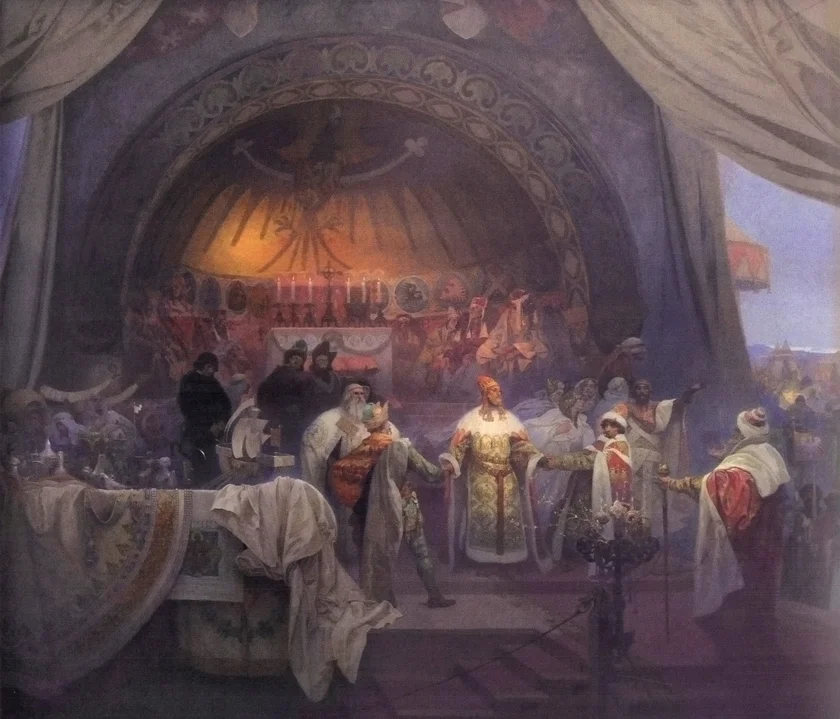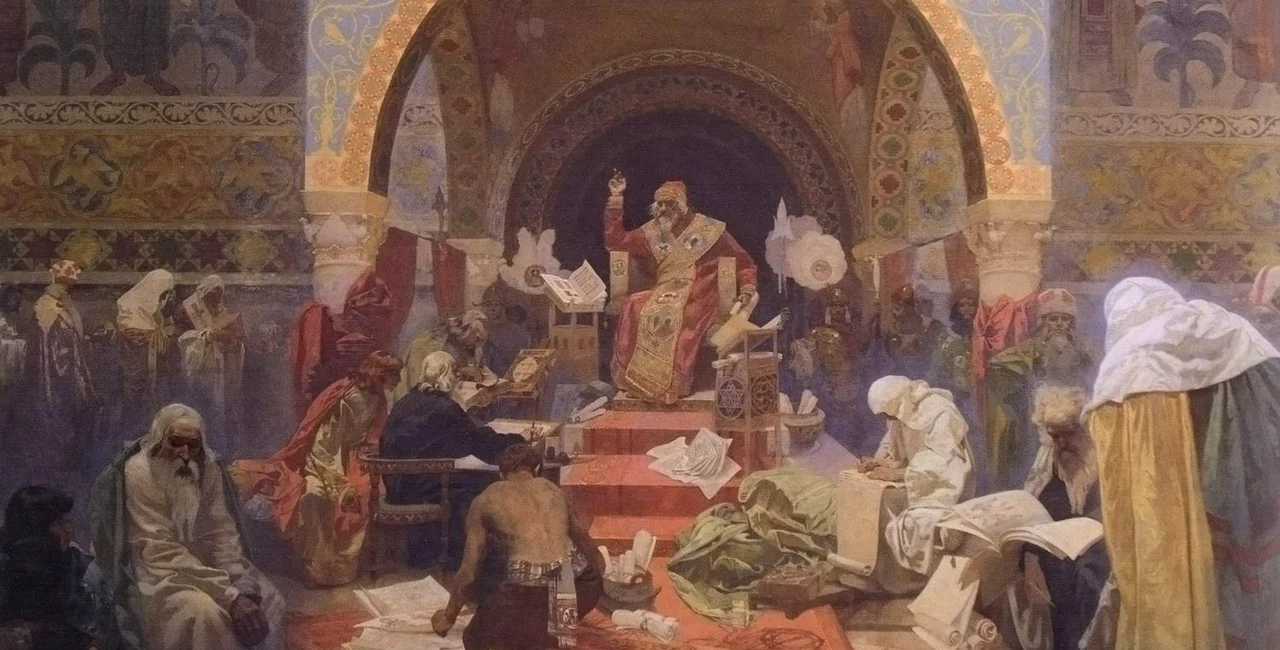A new chapter has started in the seemingly endless saga concerning the ownership of Alfons Mucha’s Slav Epic, a cycle of 20 large-scale Art Nouveau paintings.
The Prague 1 District Court has ruled that the City of Prague is not the owner, upholding a suit filed by John Mucha, the grandson of the painter. The city will appeal against the verdict, which is not final.
The judge upheld John Mucha’s claim that Prague never became the owner of the paintings because it did not meet the author’s condition that a separate exhibition space would be built to display the paintings. The city has been working on finding a suitable location, and recently narrowed down the options.
If the Court of Appeals uphold the decision, the ownership of the paintings will not automatically fall to John Mucha. His lawyer, František Vyskočil, previously said the inheritance proceedings will have to be reopened. John Mucha and his half-sister, Jarmila Mucha Plocková, would appear as legal heirs in the proceedings. Mucha Plocková has stated in the past that she disagrees with the lawsuit against the city.
The paintings are now in the depository of the Prague City Gallery (GHMP). Last October, the city approved lending the cycle for five years to the chateau in Moravský Krumlov, where the paintings were previously exhibited.
During the loan period, the issue of the exhibition space in Prague would be resolved. The paintings could be transported to Moravský Krumlov in the spring 2021, once the space there was made ready with proper climate controls. This, though, is now thrown into question by the new court ruling.
The Prague 1 District Court began dealing with John Mucha’s lawsuit in January 2017. At that time, the case was rejected and the decision was upheld by a higher court. However, the Supreme Court overturned the judgments last May. The district court began resolving the lawsuit again six months later. The city, in the new hearings, had to prove its ownership of the paintings.
The judge said that she had expressed her legal opinion in her previous decision, but was now bound by the Supreme Court’s resolution.

Disputes over the ownership of the paintings go back to the 1990s, when Prague and Moravský Krumlov each claimed the right to display them. The paintings were hidden in Moravský Krumlov during World War II, and were displayed there from 1963 to 2012. After that, the paintings were in the legal possession of the Prague City Gallery, at least until this current court ruling.
The Slav Epic was painted over 18 years starting in 1910. Alfons Mucha first conceived of the cycle in 1899, while he was working on the interior of the Pavilion of Bosnia-Herzegovina, which had been commissioned by the Austro-Hungarian government for the Paris Exhibition of 1900. He traveled widely through the Balkans, researching the history and customs of the Slavs.
Mucha’s American patron Charles Crane offered him $100,000 to finally paint the works. The Slav Epic was then created in Mucha’s rented studio at Zbiroh castle, The finished canvases were turned over to the City of Prague as they were completed.
Mucha donated the cycle to Prague provided that the city builds an exhibition hall for it, though whether or not that is a binding condition has long been disputed by the city and is at the center of the current case.
The first 11 canvases were displayed in Prague’s Klementinum in 1919. Two years latter, five of the paintings were shown in New York and Chicago. The complete cycle was displayed for the first time in 1928 in Veletržní palác.
The paintings were again shown at Veletržní palác in 2012–16. Most recently, some of the paintings were displayed at the end of 2018 and start of 2019 in Prague’s Obecní dům and in Brno, South Moravia, following a successful tour of Japan.












 Reading time: 3 minutes
Reading time: 3 minutes 


























